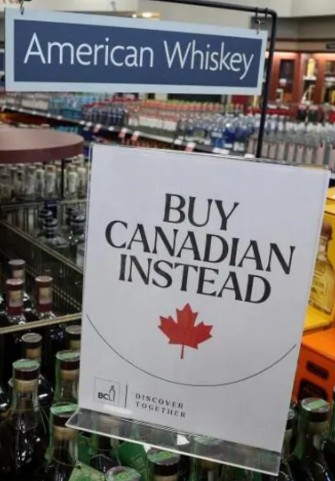Tariff Trump – Are we tariffied by America? America is using tariffs (under Trump) as high as 25% against its partners. What it means- 3min read
By admin / February 4, 2025 / No Comments / Let's Be Informed- News Today, Uncategorized
1. What are tariffs?
According to Investopedia, a tariff is a tax imposed by one country on the goods and services imported from another country to influence it, raise revenues, or protect competitive advantages.

2. What President Trump aim to achieve using tariffs?
After reading awhile, new President Donald Trump seemed to be using tariffs to raise more taxes on importation from partner countries to replace loss of tax revenue on corporate profits as he wanted to bring corporate tax rates even lower towards 16% if possible, during his term.
His aim is of two-fold. Raise tax revenue from trading partner countries. At the same time, this gesture will help reduce trade deficits that partner countries have been accumulating against the America. To him, trade deficits show that partner countries have gained unfair advantage in expense of America. Raise tariffs will help restore balance.
Canada, Mexico and China have been the top trading countries with America. Their export trading amounts in USD yearly amounts to a significant percentage of their GDPs. Not the other way around, meaning the America export amounts in USD yearly is way less significant in America’s GDP terms.
In other words, these countries benefited more in comparison, into their GDP numbers by selling to America, than America when it sells to them. America depends on oil from Canada. America buys various automobile parts from Mexico as well as America buys a lot of raw materials from China. America sells high tech stuff to these countries, unfortunately, these countries do not buy enough from America.
This accumulates into a trade deficit account that America has with each country, every year. Say imagine for a moment, that these countries buy from America the amount each year. Then there won’t be any deficit. If Canada sold USD 1Trillion worth of product and services in each year and buys USD 1 Trillion of higher tech product and services from America, there will be a balanced trade account.
Once a tariff is imposed on Canada’s product, say oil, of USD250 million, this increases the cost of selling to America. The increase in cost, will be shared between Canadian suppliers and America buyers. Nevertheless, will decrease the amount quantity imported by America. This decrease in quantity will help to put American oil suppliers into a better competitive position and help American suppliers.
3.End result
Basically, tariffs help America to collect more tax revenue.
In addition, in the end, a better trade balance is achieved. Some demand will be re-diverted to the interior American suppliers. Incidental benefits are to leverage partner countries to take action to improve border control, reduce illegal immigrants, and drug trafficking.
At least this is what the new administration of America is aiming to achieve out of tariffs. Not just “tariffying” the neighboring countries.
4.Update – Tariff Pause
At the time of this writing, 3 Feb 2025, US President Donald Trump suspended and agreed to a 30 day pause to activate the 25% tariffs against Canada and Mexico. The condition is that both Canada and Mexico will need to contribute towards border and crime enforcement to crack down immigration and drug smuggling. Canada will deploy new technology and personnel along the border and cooperate with America to fight organized crime, fentanyl smuggling and money laundering. Mexico will deploy 10,000 strong National Guard members to the border to stop the flow of illegal migration and drugs. However, the 10% additional general tariff on products and services from China will be going ahead on 4 Feb 2025.
Signing off
Nex Buzz Nex Contributor
4 Feb 2025, Tuesday.
